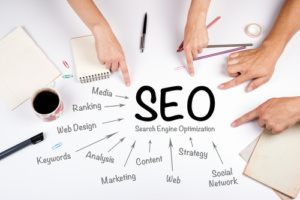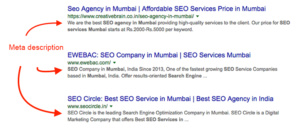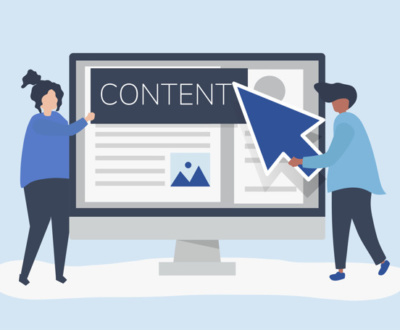 If you are running your own blogging website or just starting off with a new one, SEO becomes an important part to enhance the visibility and navigability of your website.
If you are running your own blogging website or just starting off with a new one, SEO becomes an important part to enhance the visibility and navigability of your website.
The concept of SEO is familiar to everyone from the digital world. In spite of being a streamlined concept. a lot of bloggers and digital marketers fail to implement the right SEO technique for a higher rank on Search engine result pages (SERPs). To boost the search engine rankings, you definitely need SEO. It is one of the driving factors that encourage more and more online traffic on your website.
SEO is not only applicable for ranking higher on search engines but also for delivering an optimized experience to users and executing successful digital campaigns.
However, the elementary concept of SEO encompasses techniques of Technical, On-page and Off-page SEO.
The concept of On-page SEO
On-page SEO involves optimization of every web page to boost the ranking of your website in the Search Engine Results Pages (SERPS). It involves the process of optimizing titles, descriptions, URL structure of your website and the content of web pages. The sole reason behind on-page SEO is to deliver the right amount of information to the web crawlers and help them in understanding the content and framework of your web pages.
Hence, to elevate your search engine popularity, there are 9 on-page optimization SEO techniques that will produce desired results within a significant period of time.
Page titles
- To get ranked in the index of search engines, you need to create a search-friendly, crisp and meaningful title for your content
- Search engines have dedicated crawlers that examines your web pages, evaluates the necessary details such as what your page is all about, key components of your web page, synchronization of the title and the web content.
- Adding crispy and descriptive titles is the need of the hour for a healthy on-page SEO. The title should be restricted to 60 characters or below this count since the maximum characters shown by Google in the search results is 60. Anything above the count of 60 is automatically pruned at the time of display on SERPs.
- SEO experts also suggest in adding target keywords at the beginning of your page title. It aids the search engines in understanding the meaning and context of the page at the time of indexing.
- Use of powerful words like ‘Top’, ‘Best’, ‘Amazing’ makes the title significant and eye-catching.
Meta descriptions
- Sometimes search engines such as Google uses content from your page as meta descriptions which lack the synchronism with the title of your page.
- Hence, add target keywords in the meta descriptions so that it looks compelling to the searchers and visitors.
- The meta description must speak in relevance to the description and should not exceed 170 characters.
Meta Tags
- Apart from meta descriptions, start including meta tags for each of your content. Meta tags are keywords which are used as tags for your blog posts. Meta tags or keywords should be relevant to the type of the article you are publishing on your website.
- If your article is on ‘Top 5 Digital marketing tricks’, your meta tags must include keywords like ‘SEO’. ‘Google Adwords’, ‘Social Media marketing’ etc.
Content Optimization
- When it comes to gaining traffic on your website, your primary focus should be on developing a blog that is enriched with valuable insights.
- The content should be an original one and not a plagiarised one. It should essentially contain images, presentations, and videos.
- Create content after doing an exhaustive research on the topic.
- Long-form articles can also be created to ensure a better on-page SEO.
- The article should be incisive and must include words that add value to your brand.
Re-defining URL structure
- A permalink (also known as a slug) signifies the unique URL of each page and it should not exceed 100 characters.
- An SEO friendly URL is abridged and informative and utilizes hyphens to separate the various fragments.
- Shorter URLs perform exceptionally well for search engine visibility.
- Include keywords in the URLs and make it browser-friendly.
- The URL structure can be more refined with the inclusion of categories and subcategories in it.
- You can also optimize the site structure by adding a breadcrumb menu that facilitates a streamlined navigation experience for the visitors.
Images optimization
It is imperative to say that the introduction of visual elements like images and videos in the content increases the loading speed of a webpage.
To avoid this problem, you need to do the following
- Optimise the size of the images in bytes for an accelerated loading experience.
- Include an ALT tag to describe the image that helps the search engines in understanding the essence of the image.
- Every image should have a dedicated file name that describes the image itself. Use a meaningful sentence rather than numbers.
Body Tags
A long form of content is segregated into a number of small sections and paragraphs to mitigate the challenges in reading it.
Ideally, every paragraph should not contain more than 3 or 4 lines.
- Introduction of H1, H2, H3, and H4 tags in the content is done to provide importance to specific parts of the content.
- The first heading tag is the <h1> and <h2>, <h3>, and <h4> tags are placed in hierarchical order.
- The subheadings are assigned H2, H3 tags and contain related keywords.
- Conditional formatting includes styles such as bold, underline or italics to highlight important sections of the page.
- Custom styling divides the content into sections and such initiative provides a convenient reading experience to the visitors.
Keyword Density
- Another critical step towards the SEO boost is the insertion of relevant and impactful keywords in the content. Application of Google Keyword Planner and LSI Keyword Generator is recommended for creating keyword-rich content.
- On the contrary, it is mandatory to stop repeating your keywords in your content and overabundance of keywords within your content might derogate the quality of your content and even restrict your content from getting indexed in search engines.
- Renowned SEO experts of the world hence suggest maintaining a keyword density approximately in the range of 2-5%.
Link Building
- Start linking to pages within your website and build an effective network of your important pages.
- The search engine crawler visits your webpage and follows the links embedded in your content.
- Interlinking is one way of informing the search engines about your important web pages that directly align with the types of content you are publishing.
- It is a useful way of directing more traffic to important links of your website. The web crawler gets the information on several other pages of your website.
- Through this initiative, your visitors are likely to spend more time on your website. They can click on the links and spend more time on your website by visiting different pages that contain important topics.
- With the increase in the number of pages per visit, bounce rate decreases and the readers are more likely to jump from one page to another one of your websites.
- Like interlinking, linking to external websites of high-quality guarantees the credibility of your website and plays a significant role in improving the SEO.










